Anime and Cartoons: East vs. West
So, this is all started when I tried to find a DVD of the brilliant but sadly forgotten anime series The Big O. I say ‘tried’ because to my surprise I discovered that not only were there barely any copies up for sale on both eBay and Amazon, but the asking prices ranged from £35 – 70…for two measly series’. I hadn’t encountered this much trouble finding an anime series on DVD since my fruitless hunt for Neon Genesis Evangelion last year (which was even more distressing – yes, distressing. Point of interest: the Evangelion manga is actually far easier to buy – and makes a heck more sense than the show. You can even get these handy 3-in-1 volumes, which I’ve been collecting, that also include neat stuff like full colour art pages and bizarre interviews with the writer and voice actors…if you’re an Evangelion junkie, I can’t recommend them enough.)
I did have some idea beforehand that Big O was a bit of a cult series, but the fact that the DVDs were so rare piqued my interest, so I had a nose around the show’s Wikipedia page (when in doubt…Wiki it) and found that the critical response to the show was sort of like…Marmite. Some people (like me) thought it was slick and clever with some pretty awesome mecha fight scenes, but others found it far too derivative. One guy from IGN said it seemed like
“the creators had watched The Matrix and The Truman Show one too many times.”
Yeah, I can see that. Most interestingly, however, was the fact that the show did very poorly in Japan, but was largely received positively in the West by the three people that actually watched it.
There isn’t really much reason given as to why that is online, but from what I remember of the show I could hazard a guess at why. The first thing I – and probably many other viewers – noticed when watching Big O is how similar the animation style is to Bruce Timm’s Batman: The Animated Series of the 90s, a show which took its artistic cues from film Noir of the 30s and 40s, as well Art Deco of the 20s.
In fact, the similarities between these shows are so similar, it’s about as hard to not notice them as it would be as hard not to notice you were being wacked in the face by a giant robotic arm coming out of the TV screen. Not only is this true of the animation style, but the entire colour palette, design, atmosphere and characterisation draw parallels: Big O’s protagonist – the dashing Roger Smith – is pretty much Bruce Wayne, but with a giant mecha suit instead of a human-sized Bat-themed one. He even has a British butler, for Christ’s sake.
This leads me on to another obviously Western influence – the names of the characters. Roger Smith, Dorothy Wayneright, Norman Burg… the list goes on. Of course, this is not a unique trait to Big O. Full Metal Alchemist, Attack on Titan, D-Gray Man, Hellsing and a tonne of other anime have used Western names for their characters and also are clearly set in Western countries (the most popular being America, the UK, Germany and France.) However, all of the shows I just mentioned differ from Big O in that they have all been critically and commercially successful in their home country – Japan. Why? Well, the only difference I can see is again in the animation style – the other shows I just mentioned all look like Japanese home-grown anime, whereas Big O has the paw-prints of foreign influences (Bruce Timm’s Batman) all over it.
Anime, after all, seems quite strict in its self-classification. It’s kind of like a tin of baked beans: instantly recognisable from the label, and you know exactly what you’re getting in the inside (I can’t believe I just equated anime to baked beans…is that really the best analogy I can come up with? ) Even if you’ve never consciously sat down (or stood up, you can watch things how you like…) and watched any anime since Pokémon when you were 10 years old, I bet if I showed you a picture of any anime character you would most likely be able to say that the drawing style was certainly not Western. In fact, a perfect example of this is the hugely popular (and deservedly so) cartoon series Avatar: The Last Airbender and its sequel Korra (which is currently airing as I write this.) This show is CONSTANTLY being misclassified as anime due to the obvious Eastern influences on its style and over-arching themes, when in fact both of its creators are American and the show’s network is Nickelodeon. (It looks like anime, it smells like anime, but it just ain’t anime. I will tell you why in a bit…)
This is not to say that all anime looks exactly the same though. In a similar way that different fine artists and film directors have individual and identifiable styles, anime (and manga) artists have different styles that suit different types of anime. Some shows that have stuck in my mind over the years for their outstanding and unique artwork include Soul Eater, Ghost in the Shell, One Piece, Blood Lad, Samurai Shamploo and K. Different anime studios also have a collective ‘house’ style, just like Western ones. Production I.G, which is famous for producing some of the best anime series’ and films in recent years, can be easily recognised by its super crisp and almost impossibly detailed digital rendering, not to mention its ethereal use of light and colour in post-production. Of course, the most recognisable ‘house’ style of all the Japanese studios has to be Ghibli, which has been hailed as the Disney of the East (although I think it equates better with Pixar. No offence Disney.). Ghibli’s style is probably the most Westernised of all come to think of it, yet its popularity in Japan – and internationally – cannot be overstated. It seems to be a troublesome anomaly in the context of what I’m talking about, but hey, exceptions prove the rule, right? (The answer is yes.)
All of this is not really about me accusing Japanese anime creators or fans of being closed-minded or even xenophobic, but more to do with what I mentioned earlier: the strict parameters of the medium itself. A strictness that I consider largely self-imposed. Last year when I managed to wrangle critical anime texts into my dissertation research I read one Film Professor’s (his name escapes me now) definition of anime as an animation style that can only be produced in Japan (discounting the fact the much of the more menial production work in modern anime is actually done in South Korea, but never mind…) This definition certainly gives credence to my theory as to why heavily Westernised shows such as Big O get such a lukewarm reception in their home country.
So, is there a problem with a cultural medium being so insular?
Well, let me get one thing straight first: as a Western fan, the things that first attracted and fascinated me about anime were their distinctively Japanese qualities – not just stylistically, but in terms of cultural in-jokes, references and stereotypes. They feel – without meaning to sound patronising or tourist-y – like a tiny window into an exotically different cultural landscape to my own as told right from the mouths and pens of its inhabitants. There’s a reason why there is no such thing as a ‘casual’ anime fan in the West. The fans (or ‘Otaku’ as the Japanese call them, a derogatory term similar to the American ‘geek’ or ‘nerd’ meaning someone who is obsessed with manga or anime) put the fan into fanatical. And speaking as one of them, I can tell you that I reckon this is firstly because of the medium’s unmistakable uniqueness, and secondly because – as an outsider – you really have to commit yourself to watch it to actually understand all of the…well, Japanese-ness.
I’ll give you an example: when a character (usually male) is aroused (usually at the sight of a female character’s skirt being blown up by a convenient blast of wind…trust me, this happens more than you’d think) they have a nosebleed. This is because of a Japanese ‘belief’ that having a nosebleed is linked to sexual arousal.
Here’s another example: you know how we in the UK and US (and possibly in other Western countries) have the phrase ‘my ears are burning’ when we think someone is talking about us somewhere? Well, in Japan, this is signified instead by a single, random sneeze. Without translation notes (which some subbers helpfully provide) these little quirks are lost on us Westerners, as it would be vice versa for a Japanese audience watching some Western shows. Visually, anime has its own language that you have to learn as well: sometimes characters will shrink into ‘chibi’ mode, and sometimes thoughts that are visualised and become mingled with reality, and another character can see what the other one is thinking and interact with that ‘thought.’ Yeah. There are a lot of quirks to get accustomed to, but it’s all part of the charm.
Going back to the mention of subbing though (or subtitling) – this opens up another kettle of fish for the Western Otaku. As I’m sure anyone who has ever tried directly inputting Japanese into Google translate has discovered there can be some hilariously terrible consequences of mistranslation in fan subs. Of course, I completely recommend purchasing official releases on DVD for professionally done subs (and to support the creators of the shows), however, as any seasoned fan will know, these English releases are too few and far between. (Not to mention overpriced…£16 for 4 episodes of Vampire Knight? I don’t think so HMV.) Only the most popular shows will get a Western release, and usually quite a bit longer after their Japanese release. Remember how you would have to wait, like, a whole YEAR for the next Pokémon game to come out after its Japanese release? Well, anime still feels like that for me. Even worse, the only anime that is shown on TV (that I can find) has had American dubbing wacked onto it – which can sound HORRIBLE (cases in point: Ceil Phantomhive in the dubbing of Black Butler and Sakura Kinomoto in Cardcaptors. Awful. Just…ugh.)
Saying that the American intro is just too catchy to be forgotten…
Even worse than this, anyone who has ever watched the American production company 4Kids ‘interpretations’ of anime such as Yu-Gi-Oh! and One Piece and then compared them with their Japanese originals will know just how heavily censored and fiddled with they are. (Cardcaptors is another good example of this, as I explored in my Tumblr blog – An LGBT Guide to Anime – in which 4Kids carefully cuts out every scene where it is evident that Sakura’s older brother has the hots for his male best friend. This results in one episode only being half as long as the rest, and so they have to fill time with flashbacks to the previous episodes. Really 4Kids? You think that two guys holding hands is a worse message to kids than a preteen girl sneaking out of her room every night to supposedly fight magical monsters and lie to her friends and family about it every day?)
This issue of censorship also makes the intolerance two-fold: just as Japanese audiences have little taste for Westernised shows; there are plenty of elements of Japanese shows that Western companies such as 4Kids deem unpalatable for their audiences. I have often been dismayed at the Western cultural practice of snubbing anything animated as being ‘just for kids.’ Now that I’m in my 20s * shudder * I have to admit that I’ve started wondering if I am just too old to be watching stuff like this. But then I remember that in Japan, most of the shows I watch are not aimed exclusively at kids – anime is a billion dollar (or yen, I should say) industry with a firm cultural foothold in the country’s heritage. Anime and manga are serious business and lots of it has some serious content – and by that I mean adult with a capital ‘A’. Anyone who has ever seen Ghost in the Shell, Neon Genesis Evangelion or Akira will know what I mean. Even more ‘kid-friendly’ shows such as Bleach have a fair amount of blood spurting around the place.
I suppose from Japan’s standpoint there’s also the argument that – as such moneymaking behemoth – why should this localised medium bother to try harder to extend its reach globally? And how could any foreign shows possibly compete against such overwhelming competition? With such a comparatively small international market there just doesn’t seem to be enough reason for most anime production companies to make that extra effort to cater to fans beyond the East. Or even just beyond Japan.
I think it’s about time I summed all this up. To begin with, I talked about how The Big O was not widely accepted in its home country seemingly due to its heavy use of Western influences; similarly, despite its popularity increasing from the mid-1990s to now, anime as a whole still enjoys only cult fan status in most of the West. As a Western fan, I find this a great shame – largely because of the availability issues I mentioned earlier, and also because I really feel that anime as a distinctive and imaginative creative medium is massively underrated in our mainstream visual cultural landscape. Though, perhaps I am just seeing it through the rose-tinted glasses of a foreigner…
Let’s end things on a good note though. The existence of shows such as The Big O and Avatar: The Last Airbender and its sequel Korra, prove that cultural ‘borrowing’ from the West to the East and vice versa are not only possible, but produce some brilliant results. In fact some of your favourite American cartoons over the years may be a bit more Japanese than you realised: ever seen Totally Spies, Batman: Gotham Knight, The Matrix: Animated, Ben 10 or Teen Titans? All were heavily anime influenced. (In fact, Teen Titans creator Glen Murakami was so conscious of this that he purposefully picked Japanese pop (or J-pop) band Puffy Ami Yumi to do the show’s opening theme song – in both English and Japanese.) So perhaps the way forward is more of a cocktail, rather than a straight spirit. Yes, more food analogies…
(What do you mean Totally Spies was not one of your favourite cartoons? They have lipsticks disguised as lasers! What’s not to love??)

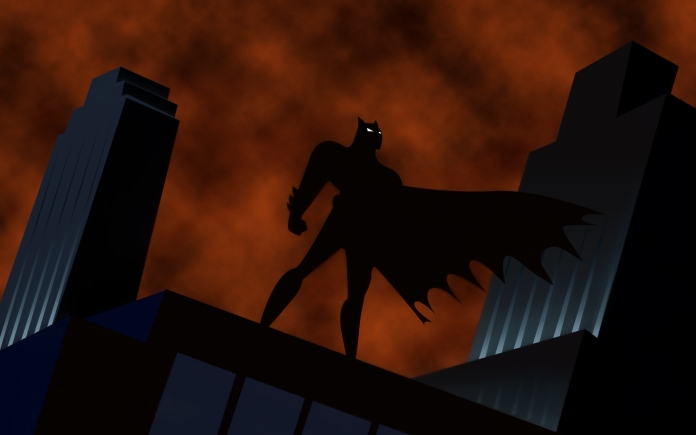
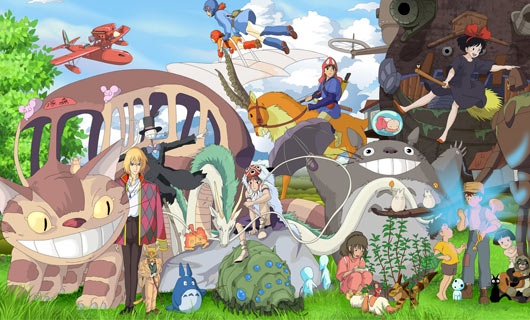
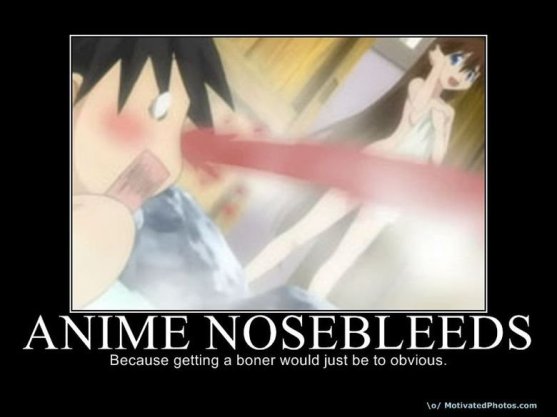
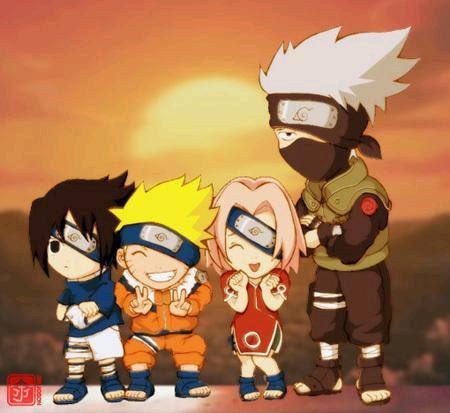
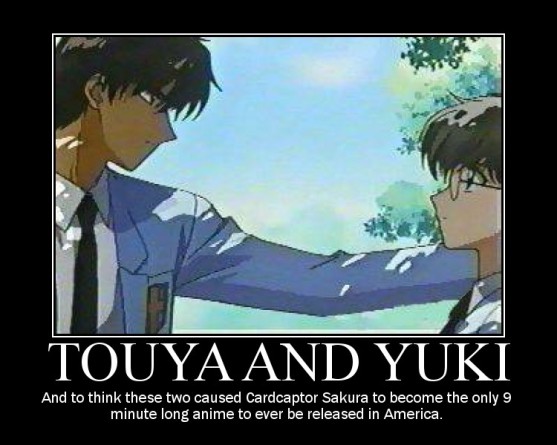

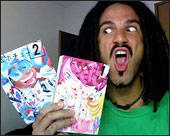
I wish you to write something else. I think it will be intresting too
LikeLike